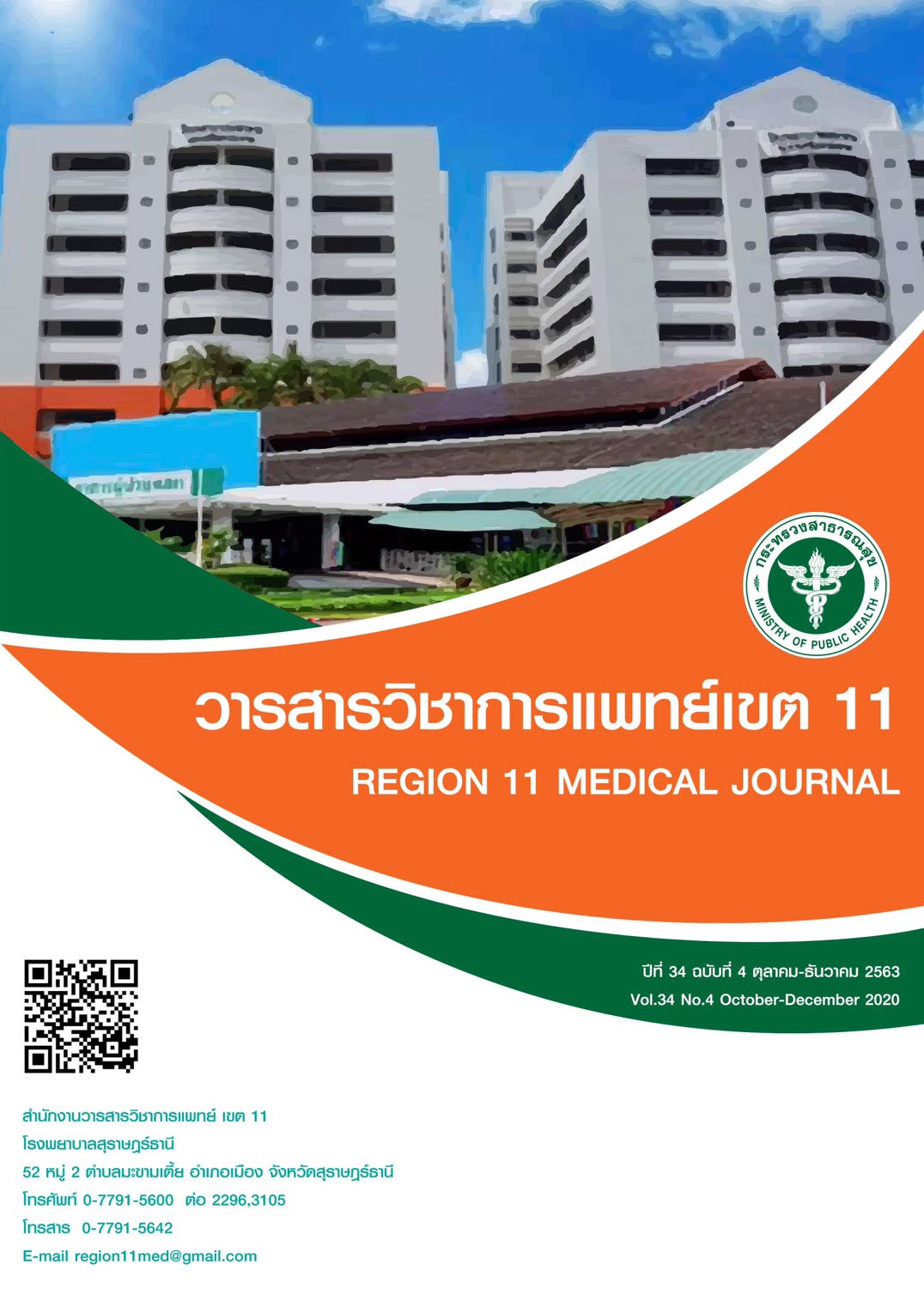Develop laboratory services to assess the severe thalassemia in pregnant women, Takuapa Hospital
Keywords:
Lean Concept, Not value activities, Severe thalassemia evaluation, 8 WastesAbstract
Background: This research presents the development of laboratory services to assess severe thalassemia in pregnant women, Takuapa Hospital. Due to the long problem of thalassemia audit service.
Objectives: To study the process of providing laboratory services to screen and confirm thalassemia in pregnant women. Study to use Lean concept to improve the quality of laboratory intensive thalassemia evaluation. And to shorten the period of laboratory intensive thalassemia evaluation in pregnant women.
Method: The study methods consisted of data collection. Using lean tools to analyze data and design and develop a new thalassemia audit service
Results: The laboratory thalassemia audit service has a 3-step process and each step takes an average of 10,440 minutes. Lean concept analyzed for wastes found that the thalassemia and verification process, average waiting time up to 10,080 and 20,160 minutes, respectively. In the screening and verification process, unnecessary movement occurs. After the design, development of the service process. The sub-steps can be reduced from 9 steps to 7 steps and the waiting time is reduced from 21 days 18 hours to 11 days 1 hour. The steps include 1) screening process reduce waiting time from 18 hours to 1 hour by increasing the audit potential for laboratory staff to examine immediately. 2) thalassemia diagnostic Increase the examination cycle from 1 round to 3 rounds / week, reducing the waiting time from 7 days to 4 days. 3) Verification process adjust the results from NHSO online instead of documents report results, reduces the waiting time from 14 days to 7 days.
Conclusion: This study demonstrated that laboratory services to evaluate severe thalassemia in pregnant women, Takuapa Hospital is more convenient and faster to operate.
References
เครือข่ายห้องปฏิบัติการธาลัสซีเมีย. แนวทางปฏิบัติในการตรวจทางห้องปฏิบัติการเพื่อสนับสนุนการควบคุมและป้องกันโรคธาลัสซีเมีย. นนทบุรี: กรมวิทยาศาสตร์การแพทย์ กระทรวงสาธารณสุข; 2559.
Kemmis S, McTaggart R. The Action Research Planer. 3rd ed. Victoria: Deakin University; 1988.
Kock N. Compensatory Adaptation to a Lean Medium: An Action Research Investigation of Electronic Communication in Process Improvement Groups. IEEE Transactions On Professional Communication; 2001. 44.
Graban, M. LEAN HOSPITALS. New York: CRC Press Taylor & Francis Group; 2008.
วิทยา สุหฤทดำรง. LEAN HOSPITALS ปรับปรุงคุณภาพ ความปลอดภัยผู้ป่วยและความพึงพอใจของพนักงาน. กรุงเทพฯ: อี.ไอ.สแควร์; 2556.
ประดิษฐ์ วงศ์มณีรุ่ง, สมเจตน์ เพิ่มพูนธัญญะ, พรเทพ เหลือทรัพย์สุข, นภดล อิ่มเอม. 1-2-3 ก้าวสู่ลีน LEAN IN ACTION. กรุงเทพฯ: สมาคมส่งเสริมเทคโนโลยี; 2552.
วิทยา สุหฤทดำรง, ยุพา กลอนกลาง. แนวคิดแบบลีน: LEAN THINKING. กรุงเทพฯ: อี.ไอ.สแควร์; 2550.
วิโรจน์ ลักขณาอดิศร. ลีนอย่างไรสร้างกำไรให้องค์กร. กรุงเทพฯ: สมาคมส่งเสริมเทคโนโลยี; 2552.
ขวัญชนก อารีย์วงศ์. การศึกษาการเพิ่มประสิทธิภาพของระบบการให้บริการเภสัชกรรมผู้ป่วยนอก โรงพยาบาลมหาวิทยาลัยนเรศวรโดยใช้วิธี Lean Production [อินเทอร์เน็ต]. 2553 [เข้าถึงเมื่อ 28 ส.ค. 2563]. เข้าถึงได้จาก:http://www.bec.nu.ac.th/becweb/graduate/Article/MBA-53.pdf.
ธนิตา ฉิมวงษ์, จิราพร นิลสุ, นภาพร วาณิชย์กุล. การประยุกต์ใช้หลักการของลีนเพื่อพัฒนา คุณภาพการดูแลผู้ป่วยเบาหวานในคลินิกเบาหวาน โรงพยาบาลระยอง. วารสารพยาบาลกระทรวง สาธารณสุข. 2557;24:121-35.
วัชนาภา ชาติมนตรี, บุญใจ ศรีสถิตนรากูร. การใช้แนวคิดลีนในการพัฒนาคุณภาพบริการพยาบาลกรณีศึกษา โรงพยาบาลตติยภูมิ. วารสารพยาบาลศาสตร์ จุฬาลงกรณ์มหาวิทยาลัย. 2556;25:53 - 64






